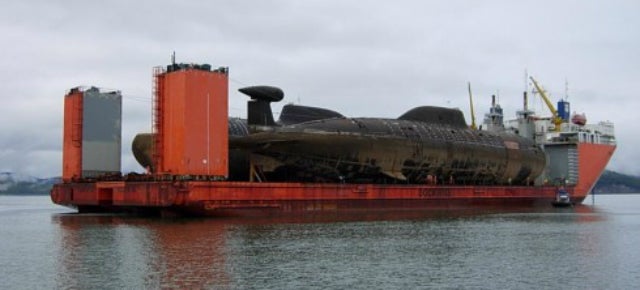
Eventually four generations* of submarine PWRs were utilised, the last entering service in 1995 in the Severodvinsk class. Russia developed both PWR and lead-bismuth cooled reactor designs, the latter not persisting. Rolls-Royce built Westinghouse-derived units for the UK Royal Navy submarines and then developed the design further to the PWR2.
#Russian biggest submarine series
The technology was shared with Britain, while French, Russian and Chinese developments proceeded separately.Īfter the Skate-class vessels, reactor development proceeded and in the USA a single series of standardized designs was built by both Westinghouse and GE, one reactor powering each vessel. Nuclear power had revolutionised the Navy. Remarkably, the Enterprise remained in service to the end of 2012.īy 1962 the US Navy had 26 nuclear submarines operational and 30 under construction. A cruiser, USS Long Beach, followed in 1961 and was powered by two of these early units. Nautilus led to the parallel development of further ( Skate-class) submarines, powered by single pressurised water reactors, and an aircraft carrier, USS Enterprise, powered by eight Westinghouse reactor units in 1960. This marked the transition of submarines from slow underwater vessels to warships capable of sustaining 20-25 knots submerged for long periods, independent of needing air for diesel engines to charge batteries. The first nuclear-powered submarine, USS Nautilus, put to sea in 1955. Work on nuclear marine propulsion started in the 1940s, and the first test reactor started up in USA in 1953. So far, exaggerated fears about safety have caused political restriction on port access. In future, constraints on fossil fuel use in transport may bring marine nuclear propulsion into more widespread use.Most are submarines, but they range from icebreakers to aircraft carriers.Over 160 ships are powered by more than 200 small nuclear reactors.Nuclear power is particularly suitable for vessels which need to be at sea for long periods without refuelling, or for powerful submarine propulsion.builds some of the best nuclear powered submarines anywhere, Russia is not far behind. After the collapse of the Soviet Union, Russia inherited the bulk of the USSR’s submarine fleet and undersea technology. The Cold War led to an underwater arms race between the two, with both sides racing to adopt nuclear power, guided torpedoes, and nuclear-tipped ballistic missiles. The navies of both countries have been rivals for decades, dating back to the end of the Second World War. While the American subs carry more weapons, the Russian submarine has a bigger bag of tricks. Navy’s Virginia Block V and Russian Navy’s Yasen M submarine (top) compare. A natural question is how do their submarines stack up? A new article explains just how the U.S.

The United States and Russia are arguably the two dominant submarine powers on the planet.



 0 kommentar(er)
0 kommentar(er)
